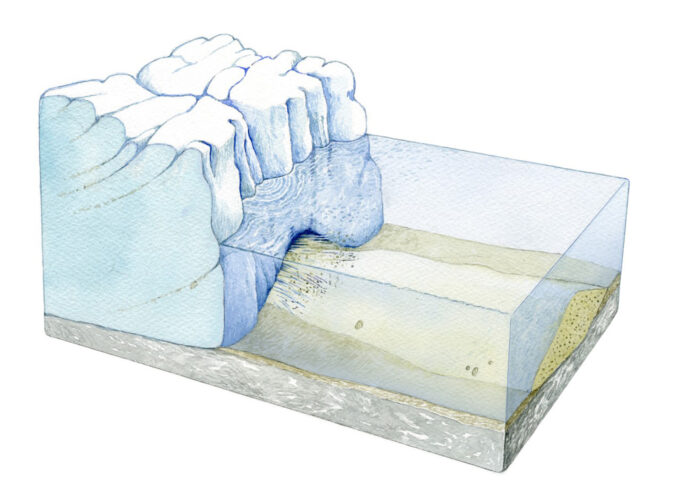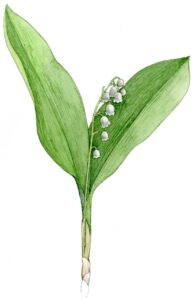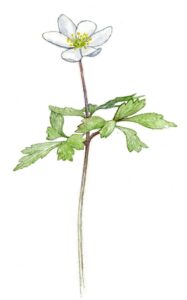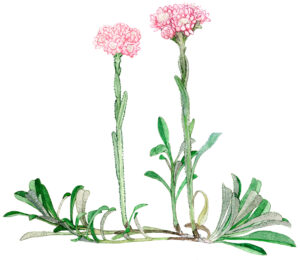Traces of the Ice Age
As recently as 10,000 years ago, the current Kymi River area was at the bottom of an arctic ocean and most of our country’s current surface was covered by hundreds of metres of ice. Over 9,000 years ago, as the ice age receded, the land slowly began to rise from the weight of the ice and eventually took its current shape. This is when also Kymijoki and Käyrälampi were born.

The Käyrälampi area is located on the northern slope of the Salpausselkä ridge and shows clear evidence of glacial formations, such as moraine hills and rapakivi rocks, a distinctive stone type of southeast Finland.
The rugged terrain of the Salpausselkä ridge has created its own typical plant species. The northern slope of the ridge in front of you, on the shadier side, is home to such species as lily of the valley, ferns, unspotted lungwort, liverwort, wood anemone and baneberry.
Plants

Lily of the valley (Convallaria majalis)
Finland’s national flower, the lily of the valley, thrives in shady places in woodlands and ridges. In May-June, the lily of the valley opens its sleepy, white flowers with a strong fragrance. Did you know that the Finnish name kielo comes from the tongue-like leaves of the flower?

Wood anemone (Anemone nemorosa)
The wood anemone is a plant of grove-like, fresh forests, which blooms in the spring around Mother’s Day with the prettiest, whitest flowers.
Typical species on the sunny, even scorching southern slopes of the ridges include pine, common bearberry, catsfoot, lady of the snows and clammy campion.

Catsfoot (Antennaria dioica)
The catsfoot forms carpet-like growths with its runners and blooms in June-July with white or pink, roundish, smallest flowers that look like soft cat’s paws.
Everyone’s rights
You may pick wild flowers from nature, but you may not damage woody plants or break their branches. Collecting or destroying protected plants is prohibited by law. Moreover, collecting birch bark, sap, mosses and lichens is prohibited without the landowner’s permission.
Please also remember to respect the fragile nature and soil of the valuable ridge areas by walking mainly on marked routes and prepared paths.
Updated 13.2.2024